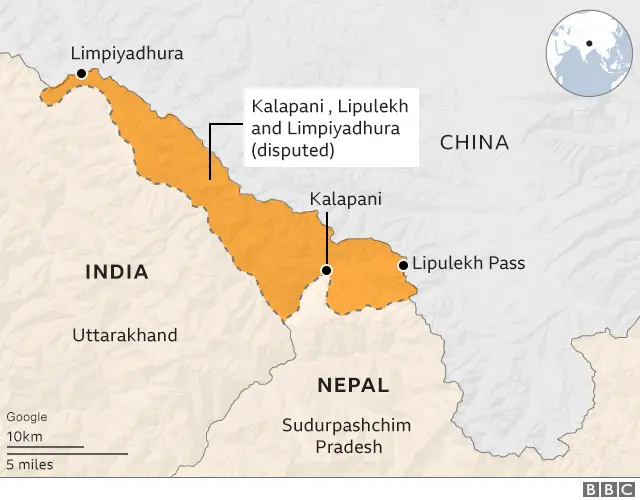SOURCE: AFI

Nepal and India continue to be locked in a territorial dispute concerning the Kalapani, Lipulekh, and Limpiyadhura areas. Both countries claim ownership of these regions, which are currently administered by India.
Nepal’s Deputy Prime Minister and Foreign Affairs Minister, Narayan Kaji Shrestha, reiterated the country’s desire for an amicable resolution through diplomatic channels and discussions. This stance echoes Nepal’s previous actions under the KP Sharma Oli administration, which also included incorporating the disputed areas into an official national map.
India has consistently rejected Nepal’s claims and expressed disapproval of their recent move to depict the disputed territories on their new 100 rupee note. Indian External Affairs Minister S Jaishankar emphasized ongoing discussions through established channels and downplayed the effectiveness of Nepal’s unilateral actions.
The disagreement stems from the interpretation of the Sugauli Treaty signed in 1816. Both sides have differing views on the precise demarcation of the border. Tensions escalated in 2019 when India issued a new map incorporating the disputed areas, prompting a similar response from Nepal in 2020.
The path forward appears unclear. Despite Nepal’s stated desire for dialogue, India’s stance against unilateral actions may impede progress. Resolving this longstanding dispute will require both nations to engage in constructive talks and find common ground based on historical evidence and mutual respect.